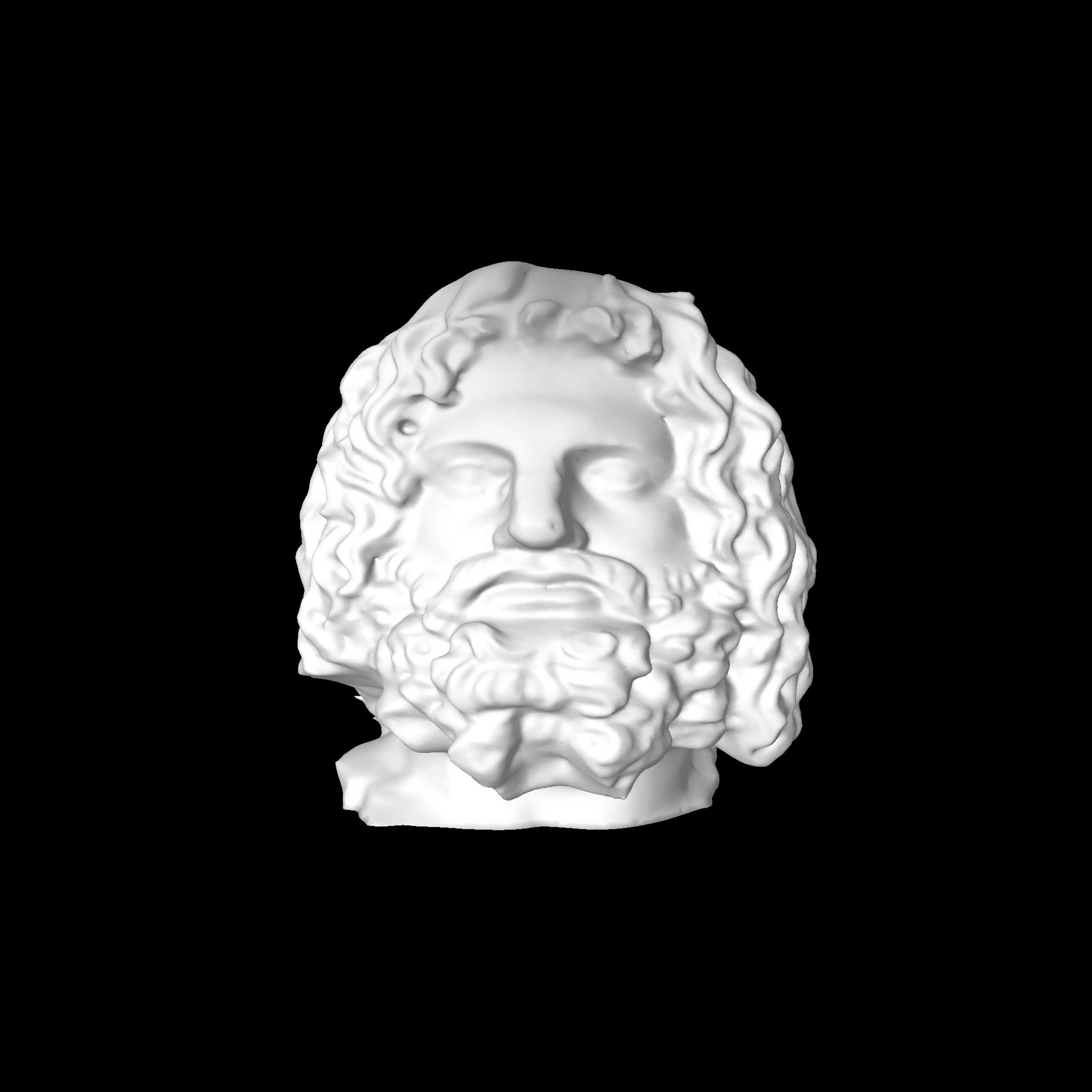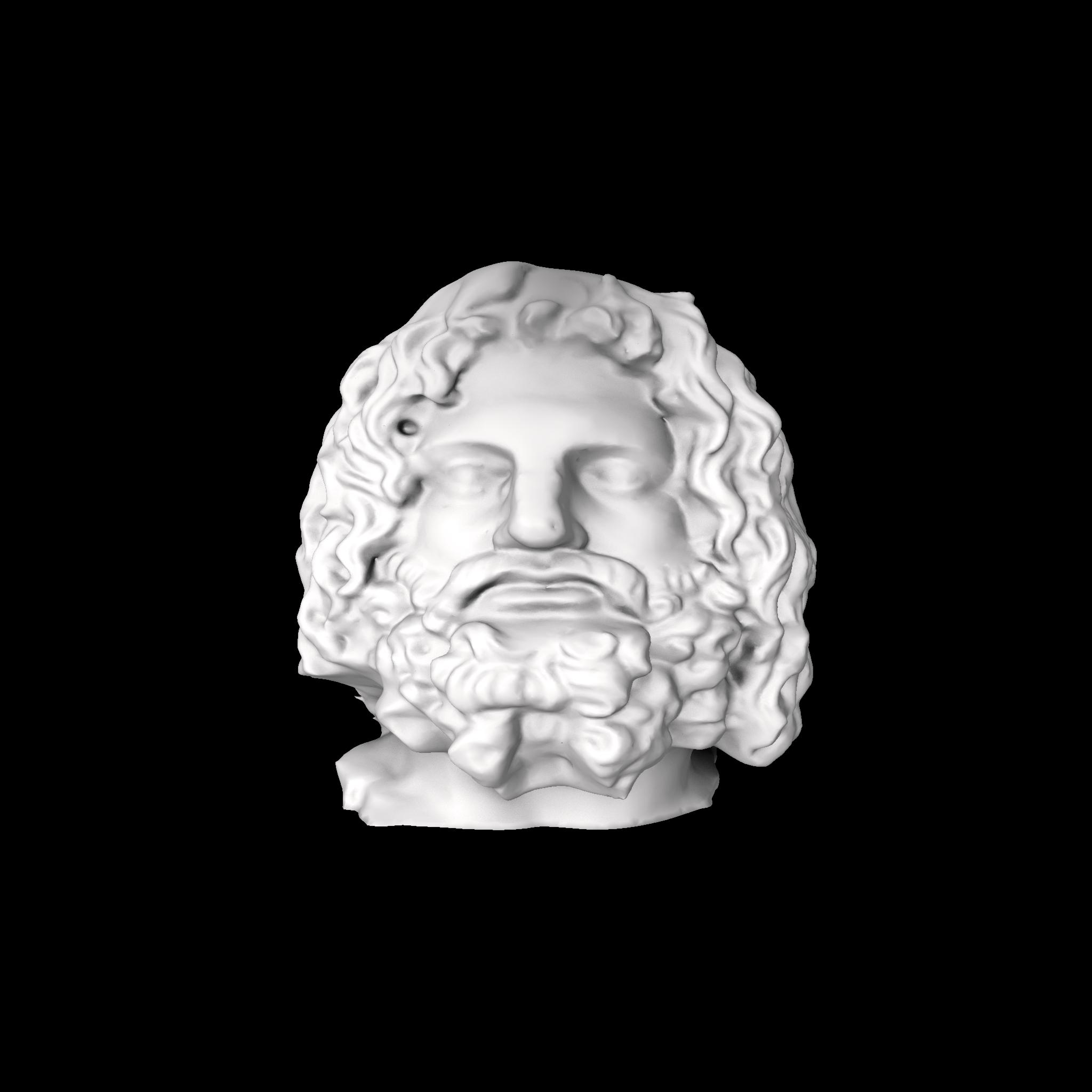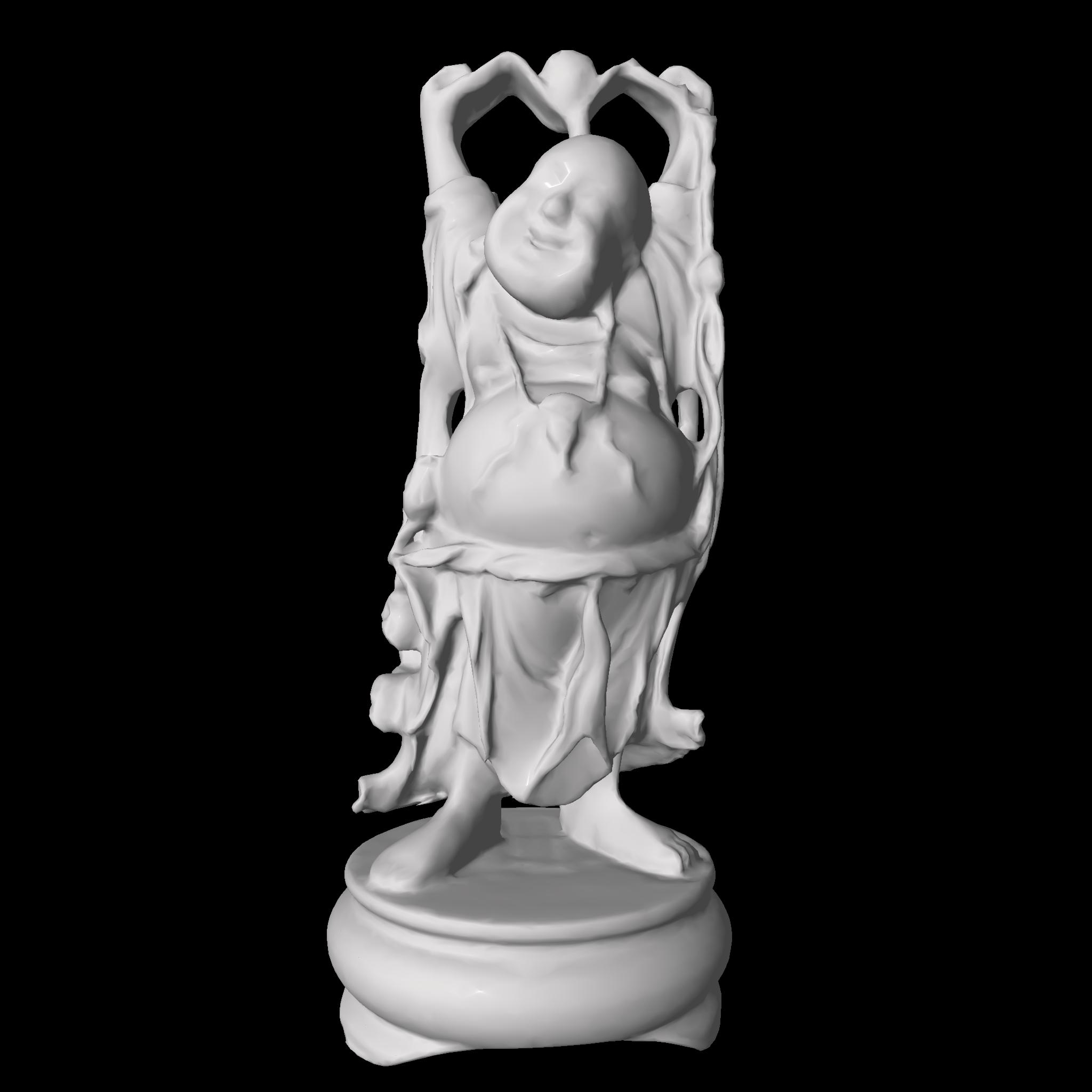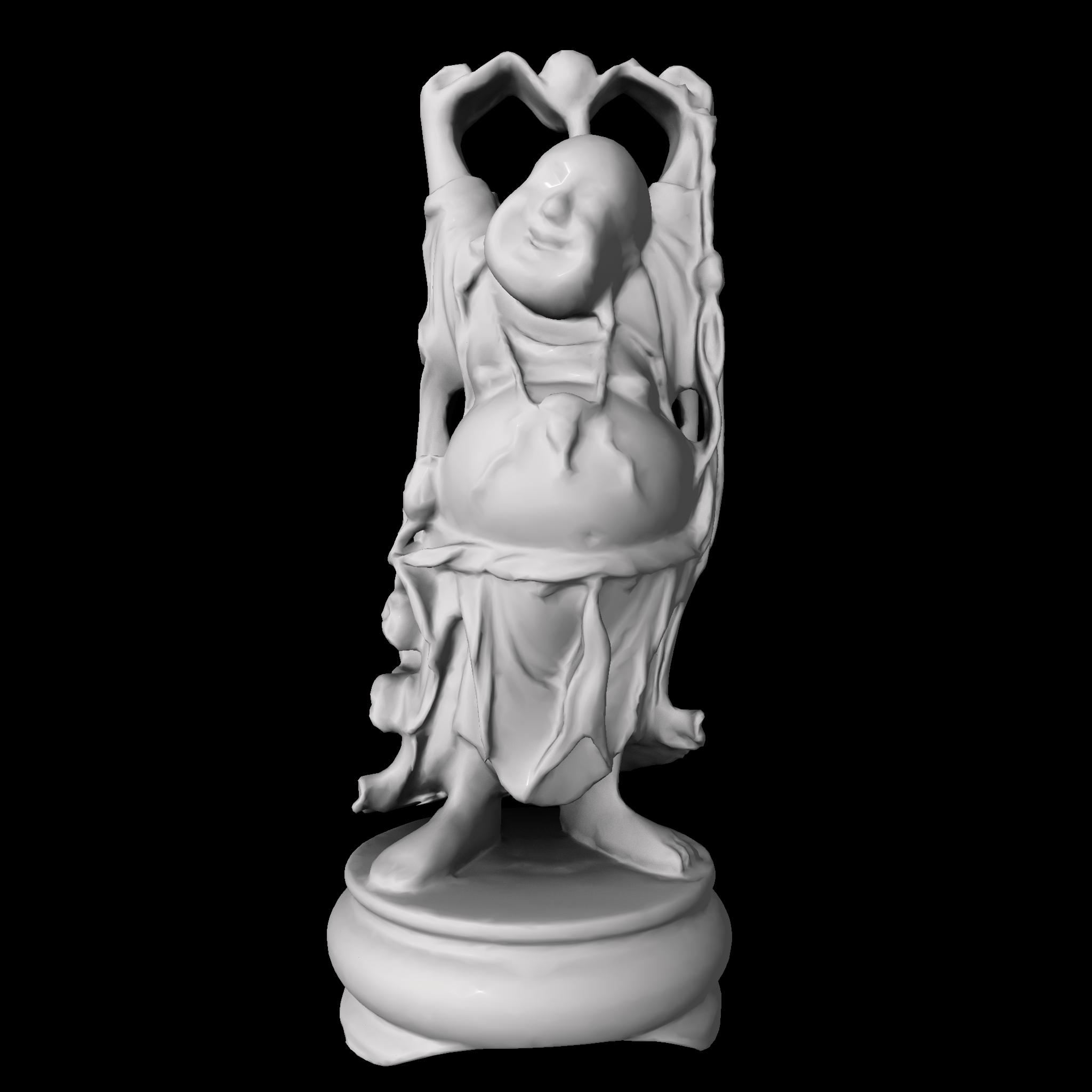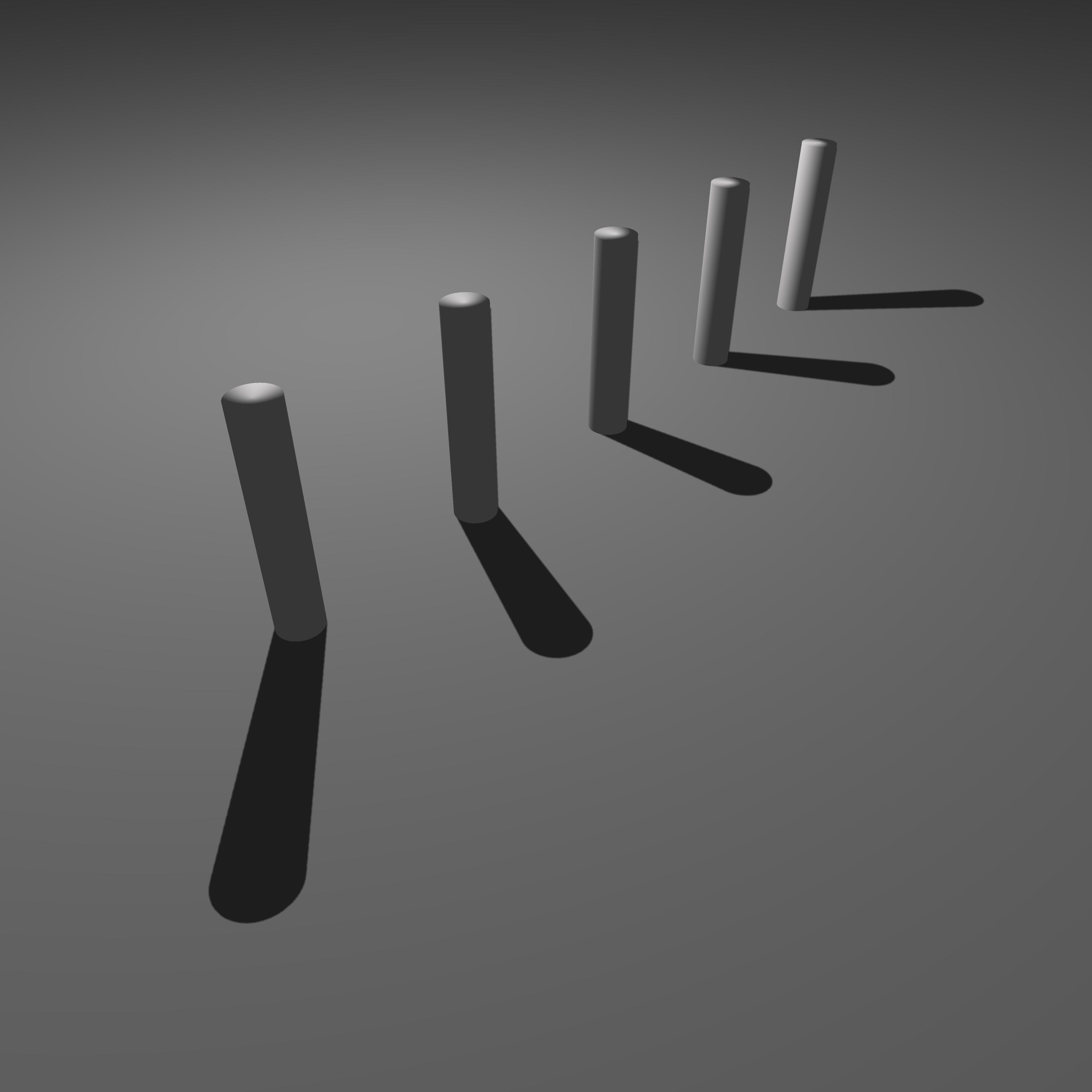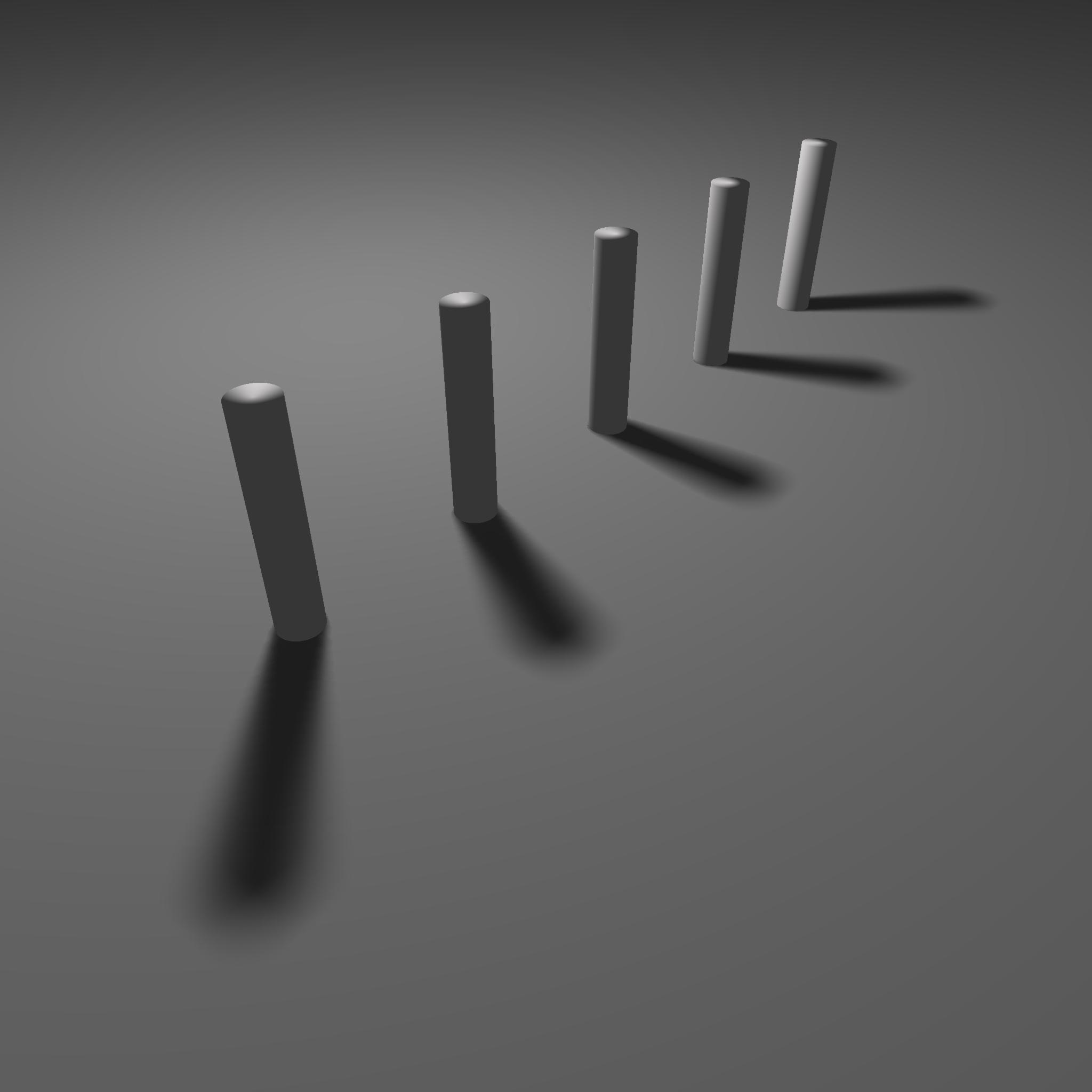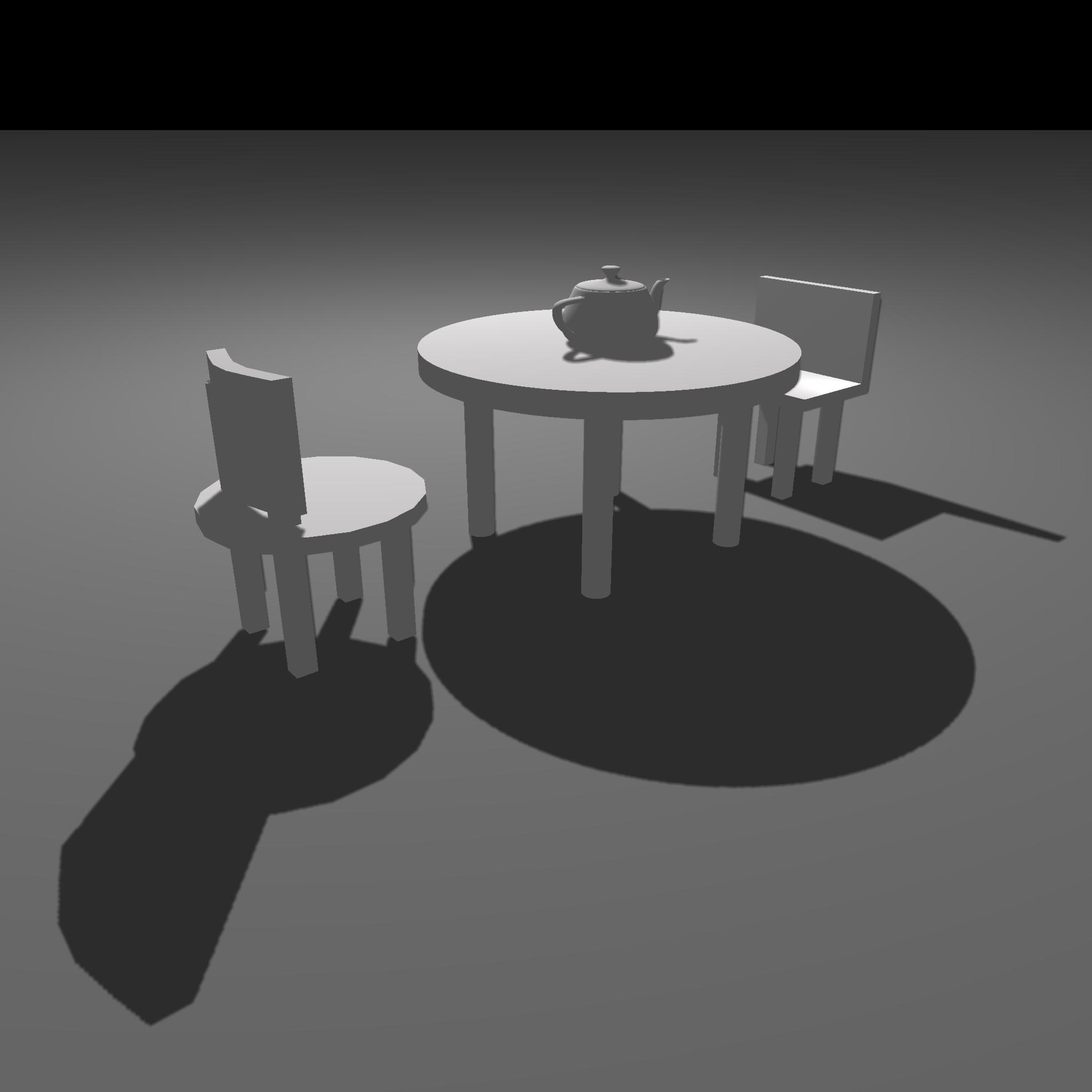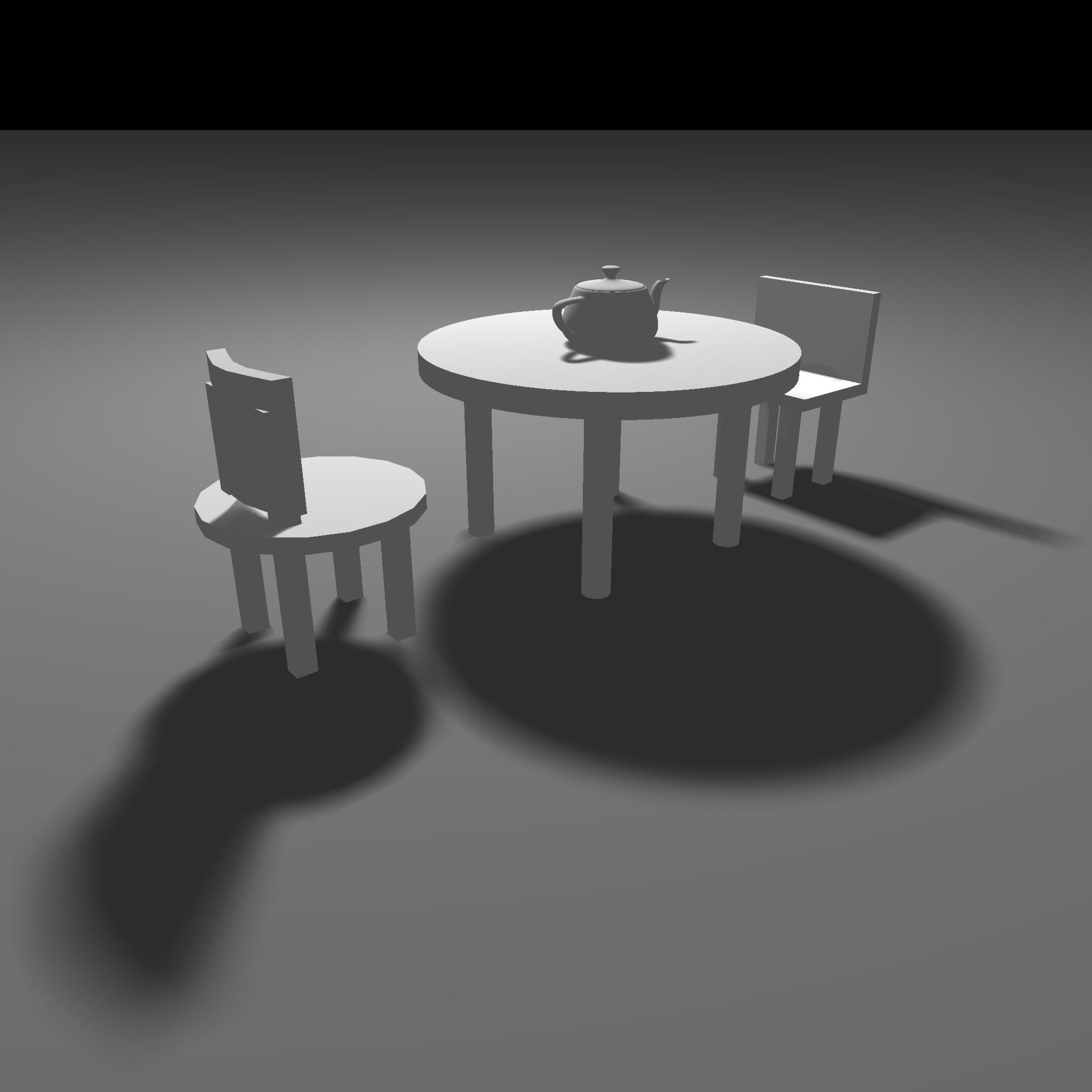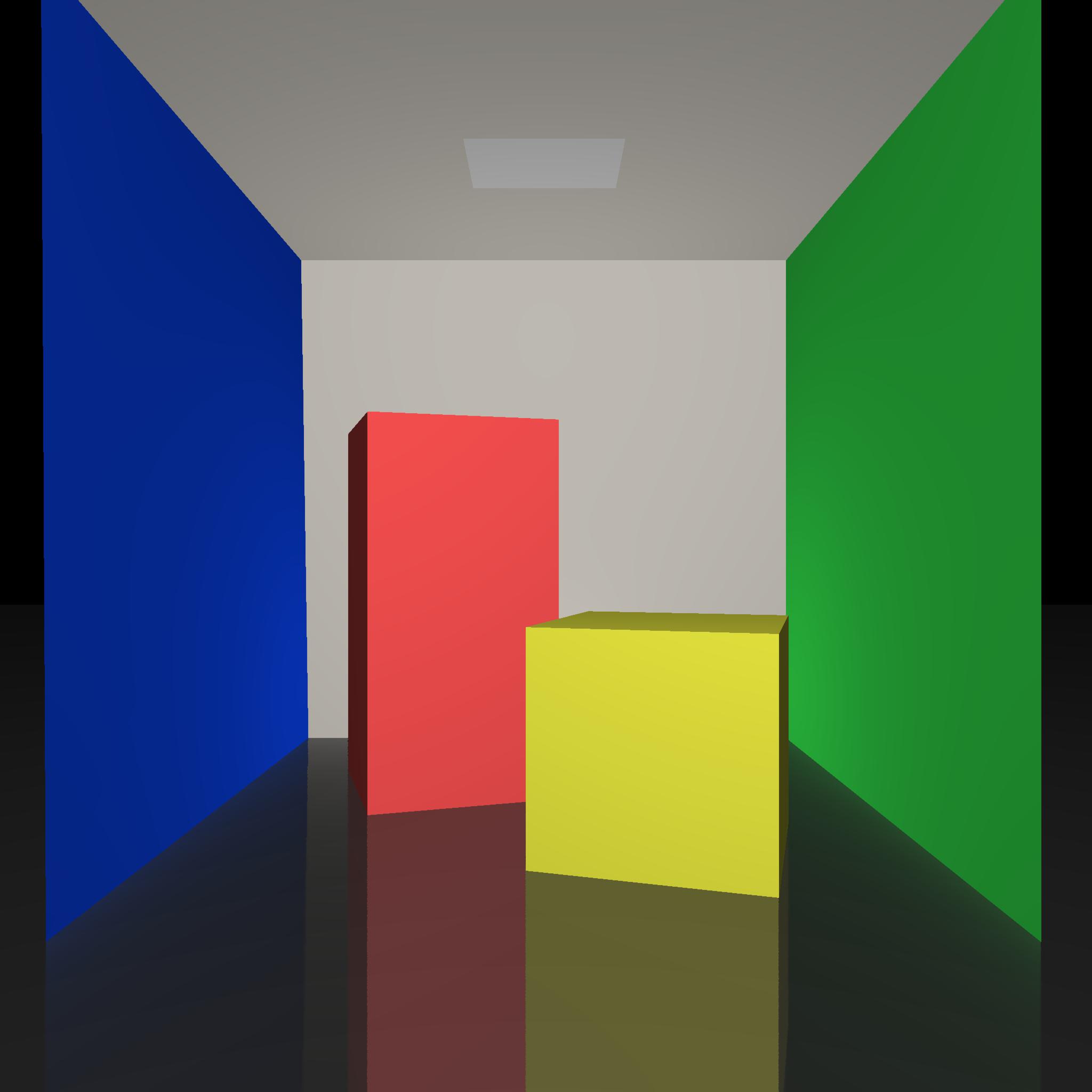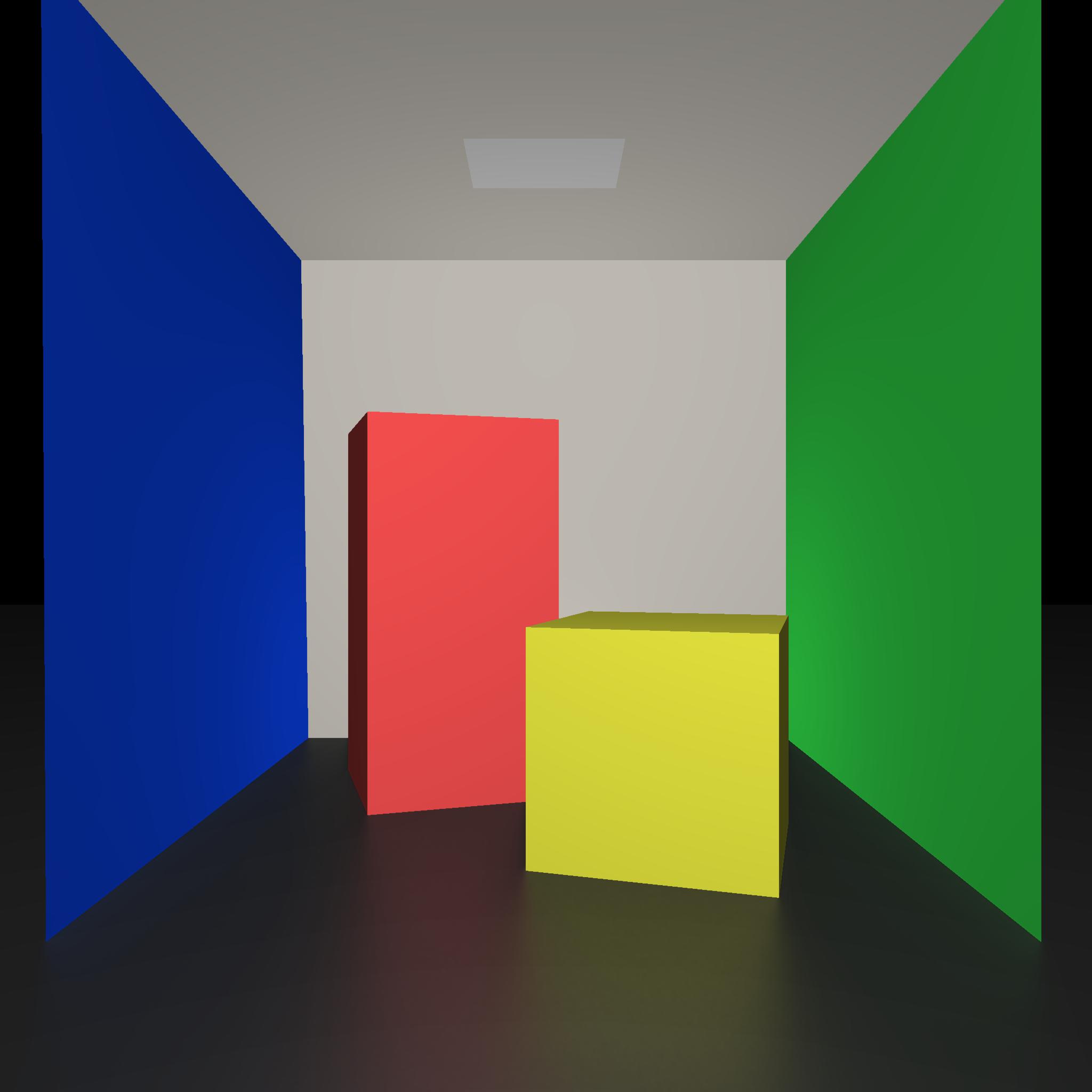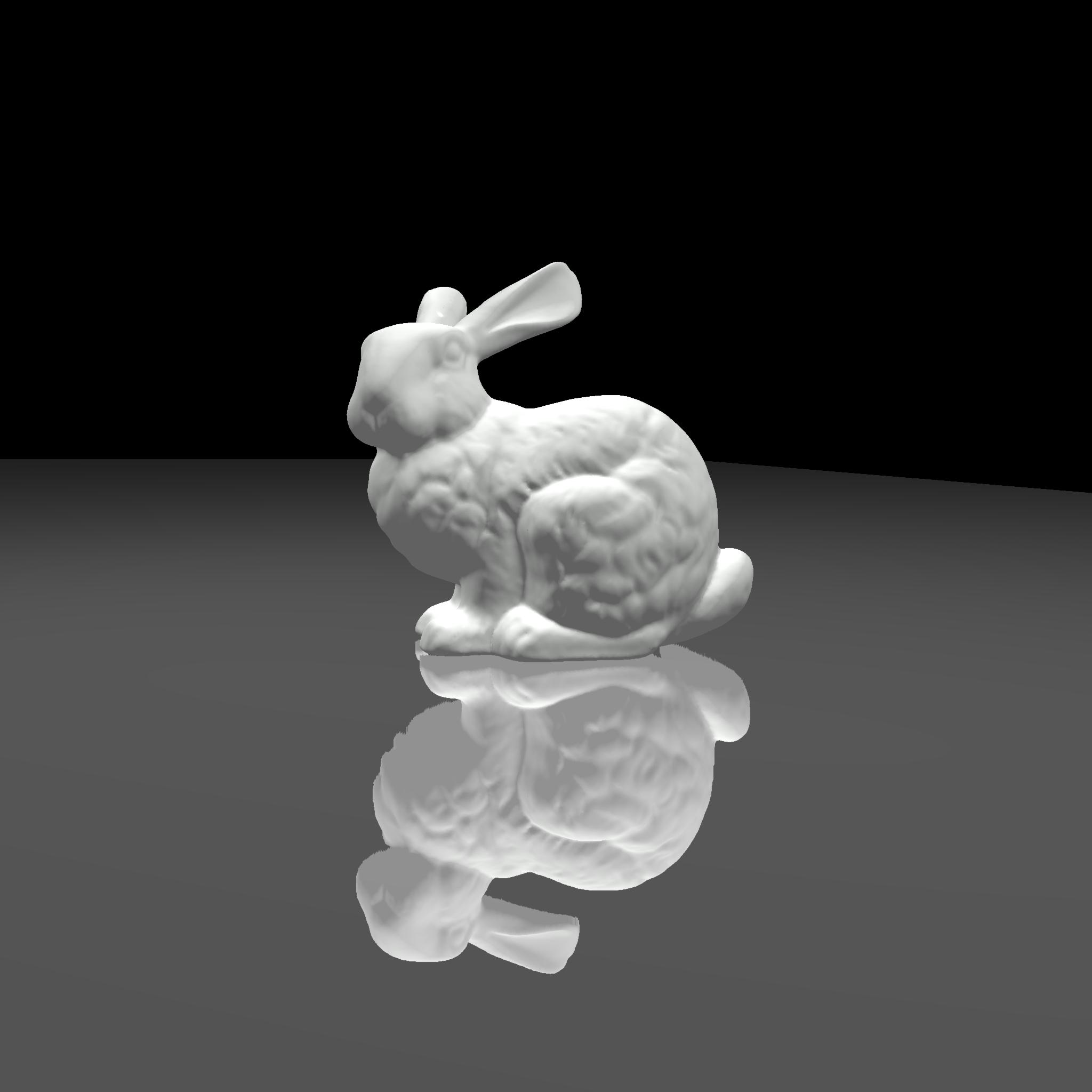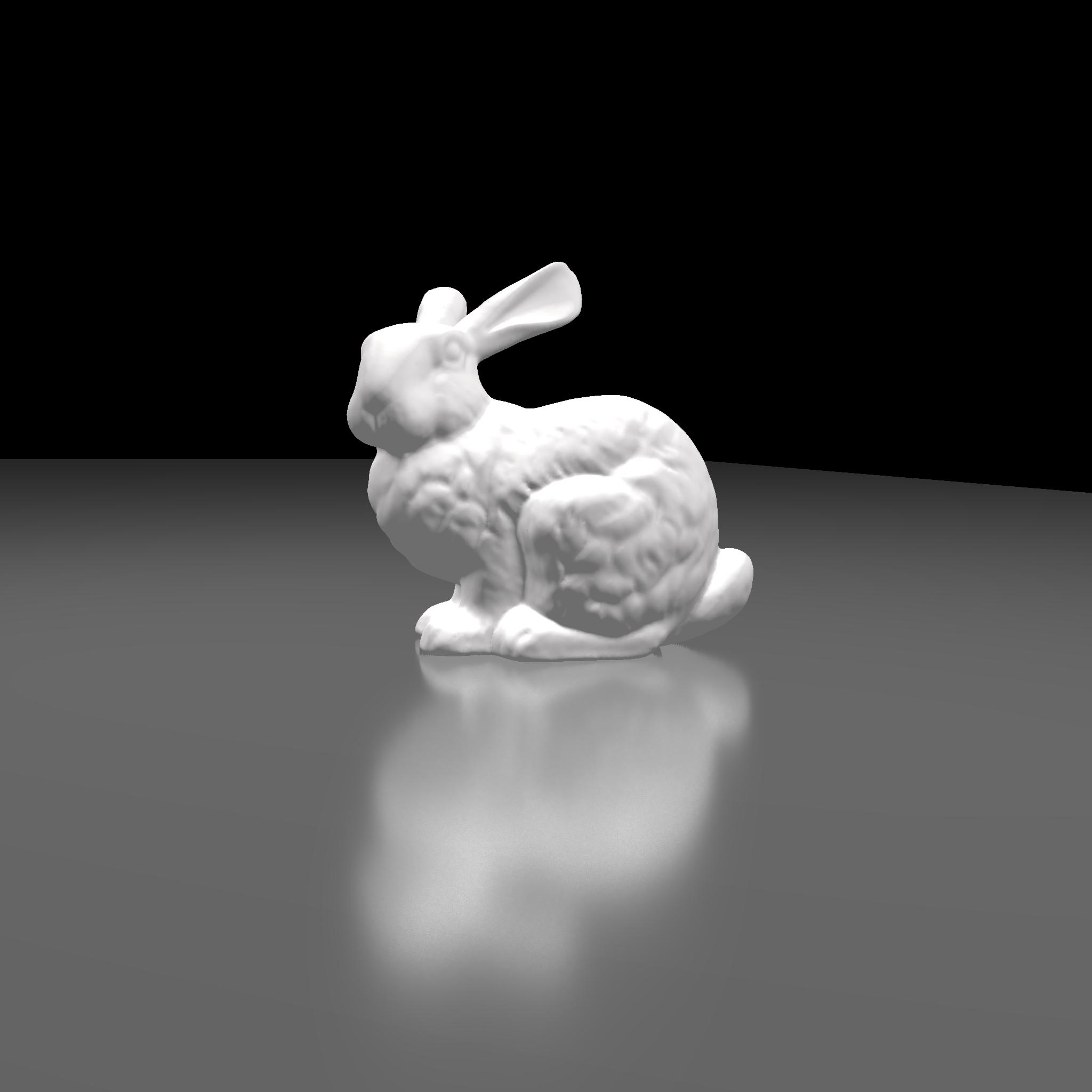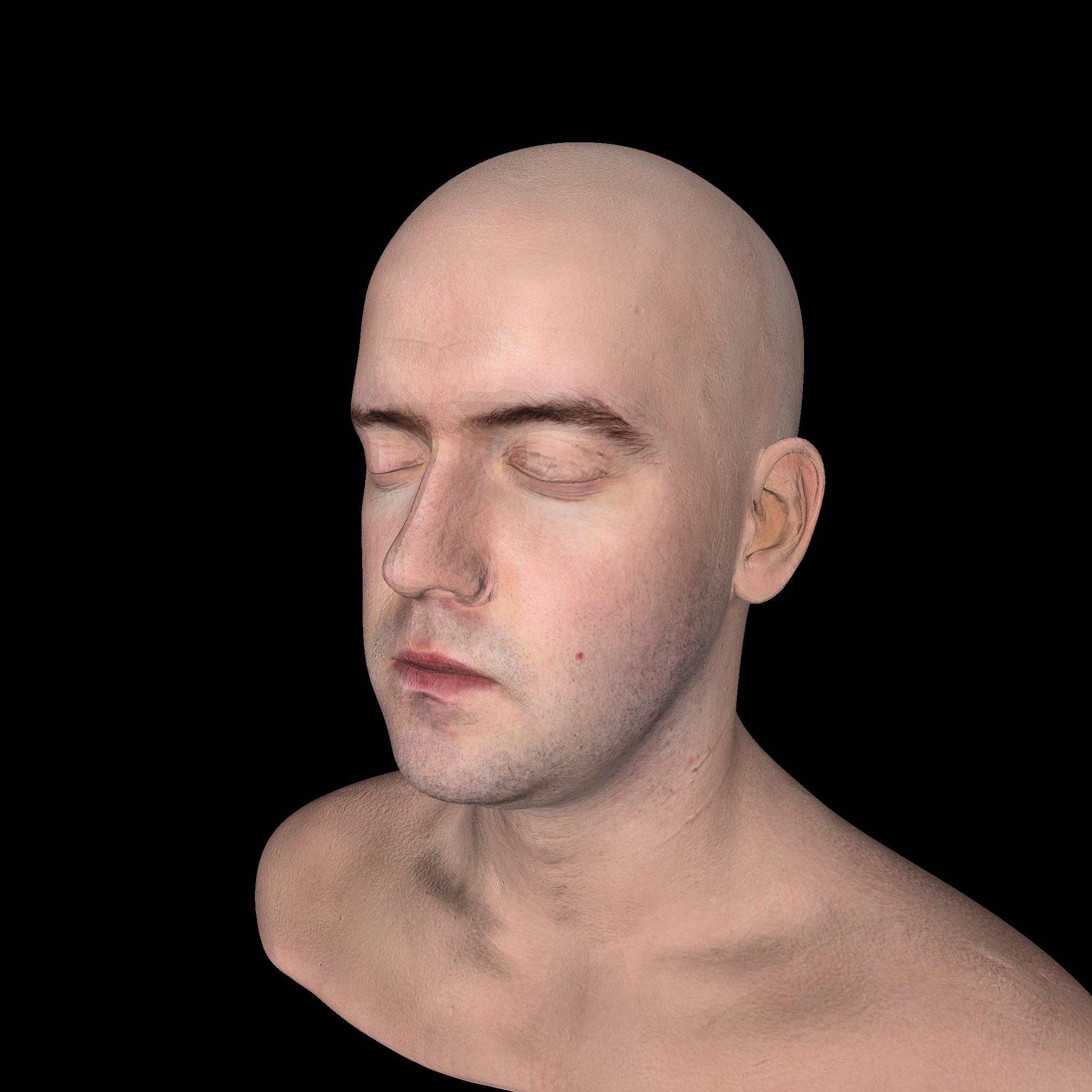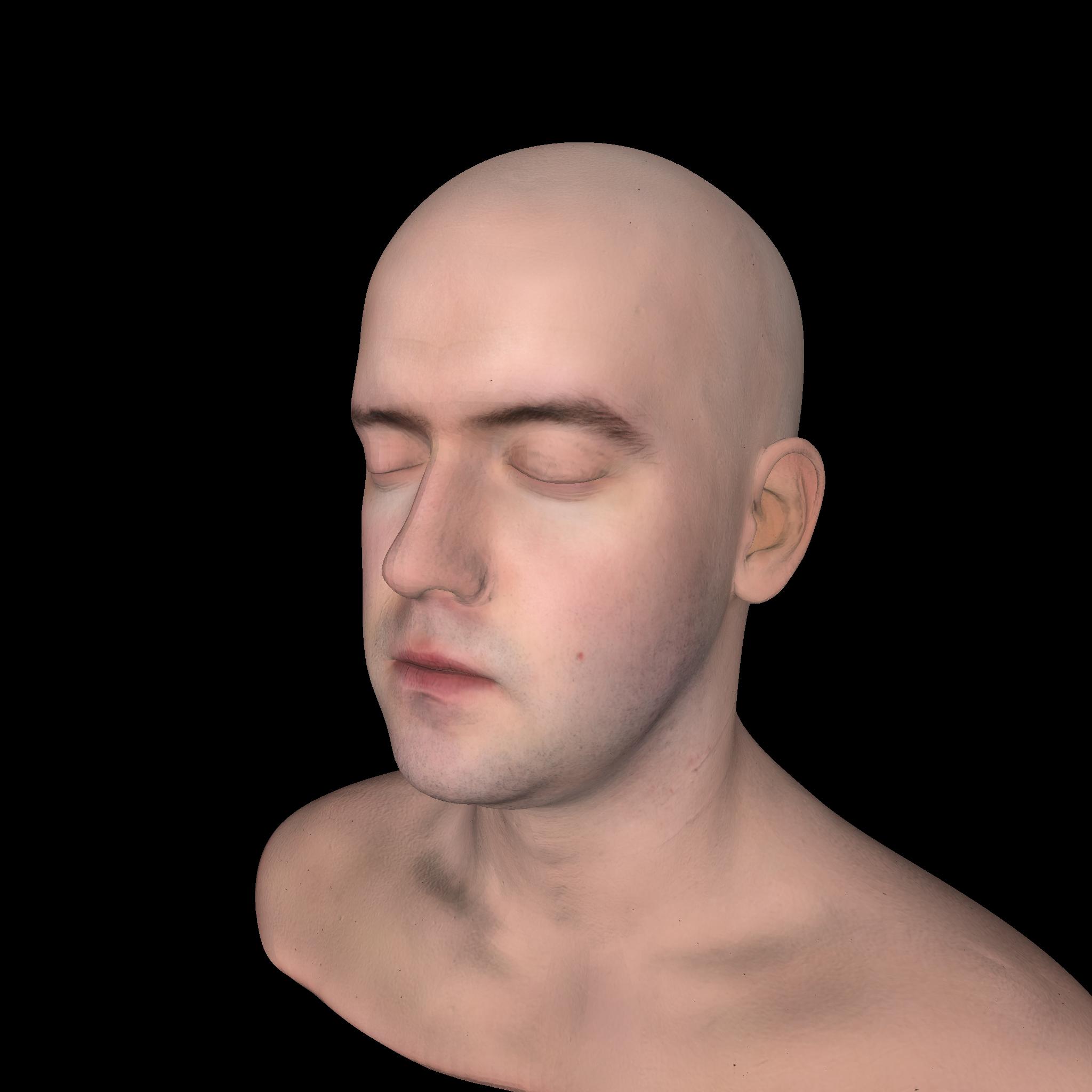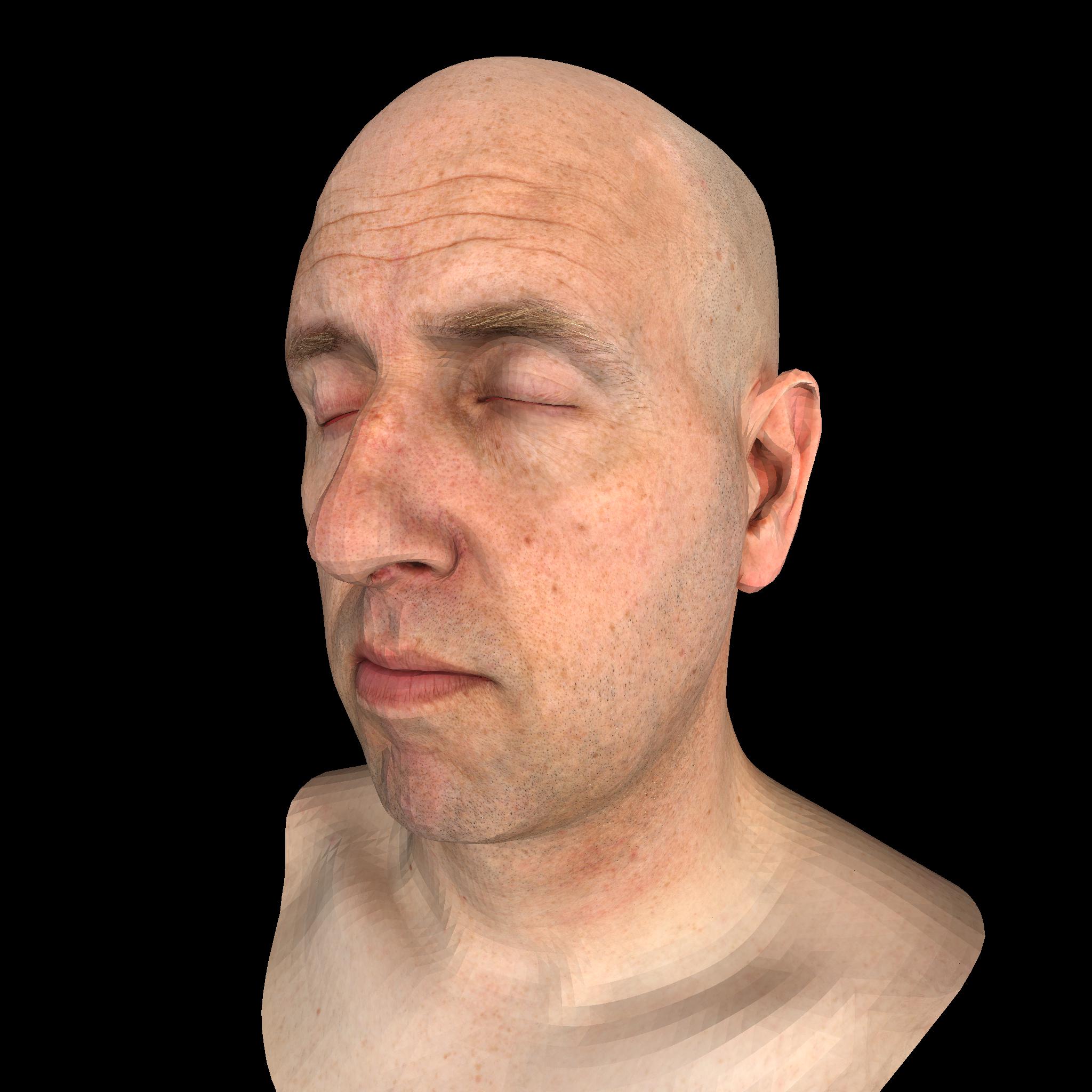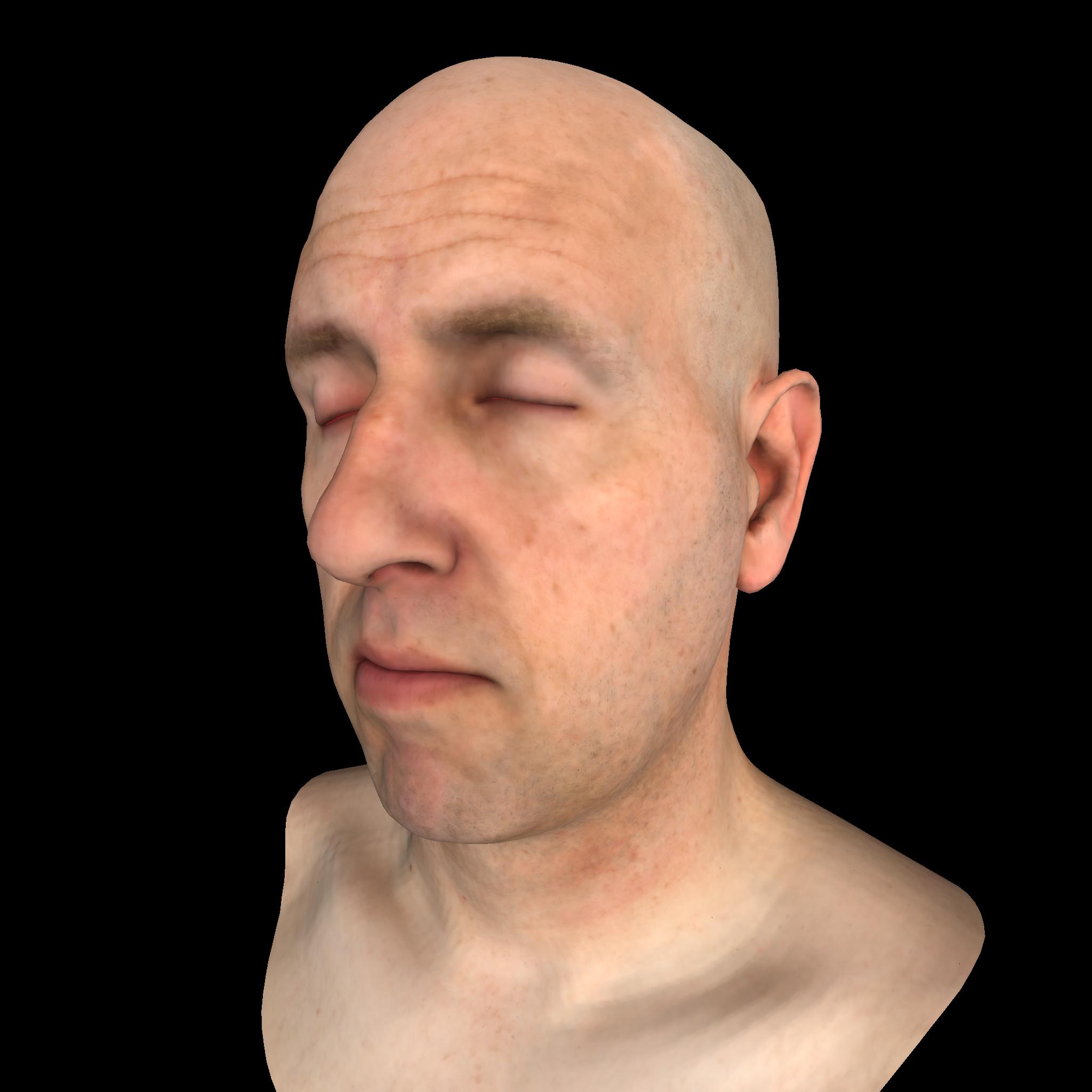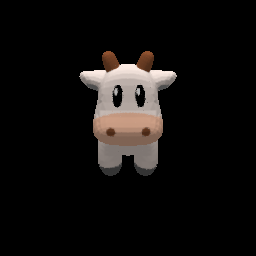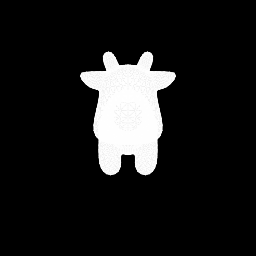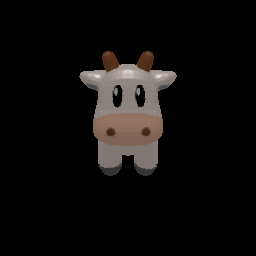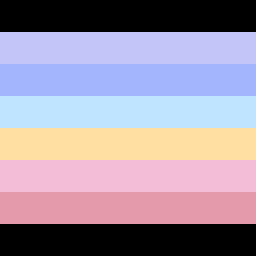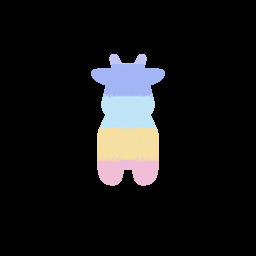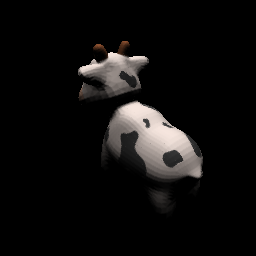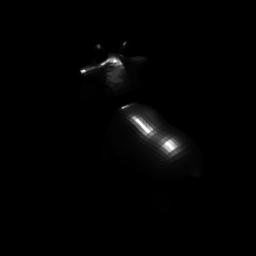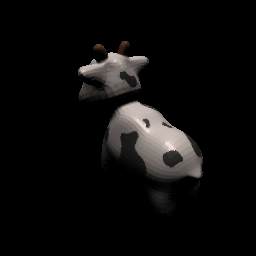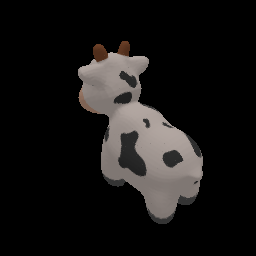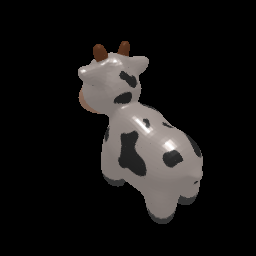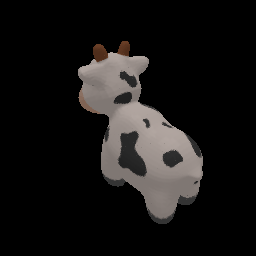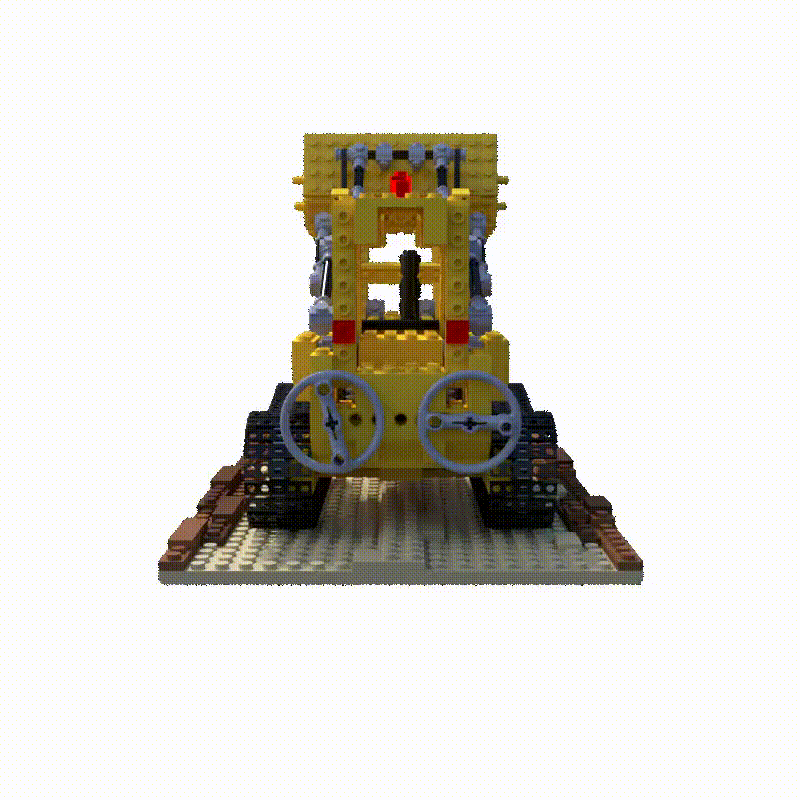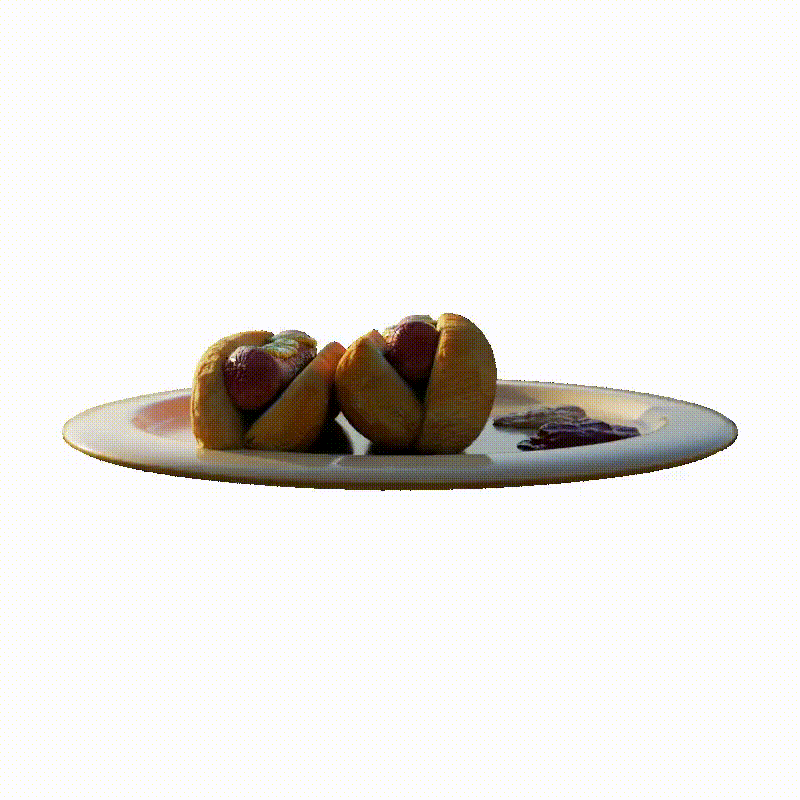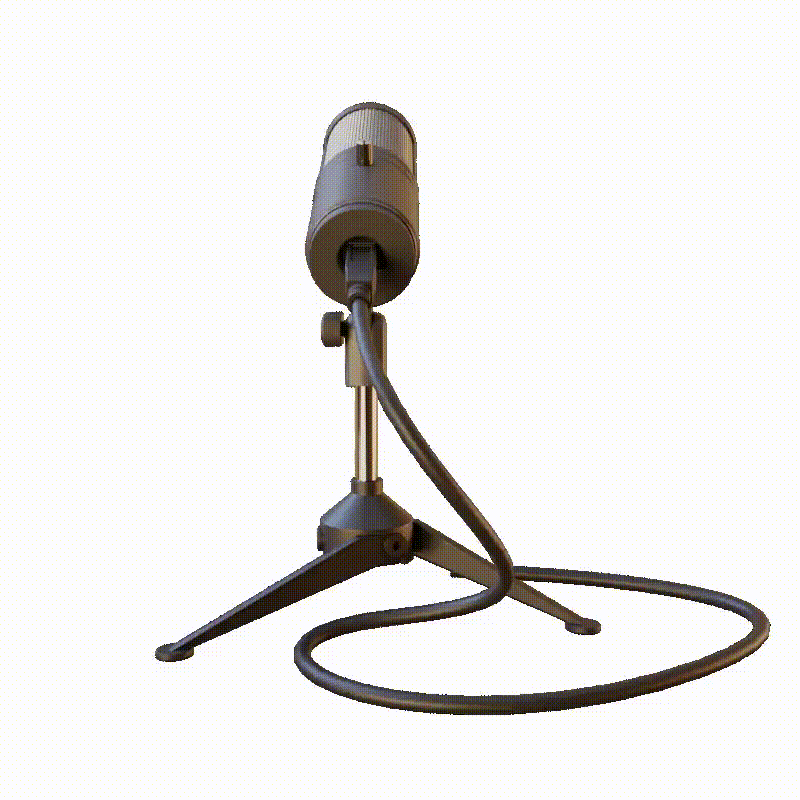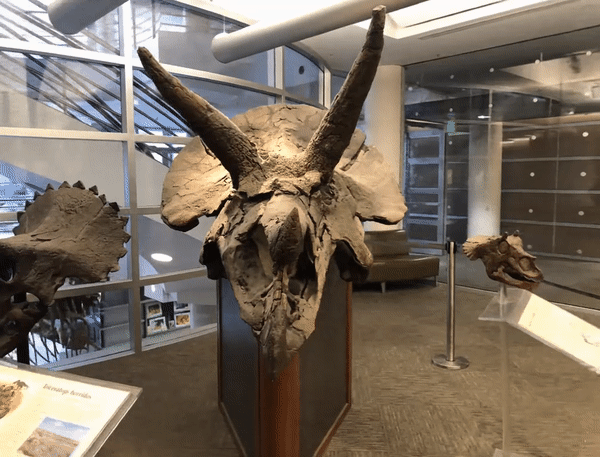-
SoftRas acceleration! (Ours is times faster than other implementations.)
-
Support various rendering effects including Ambient occlusion, Soft shadow, Global illumination and Subsurface scattering!
- Ambient occlusion
Without SSAO With SSAO Without SSAO With SSAO
- Soft Shadow
Hard Shadow Soft Shadow Hard Shadow Soft Shadow
- Global Illumination
Mirror Reflection Glossy Reflection Mirror Reflection Glossy Reflection
- Subsurface Scattering
Without SSS With SSS Without SSS With SSS
-
SoftRas Rendering time for 1024 * 1024 resolution (including forward rendering + gradients: ms)
Small-size Mesh(280) Middle-size Mesh(3.3k) Large-size Mesh(39k) Official SoftRas 9.2 44.1 404.9 Pytorch3D SoftRas 48.3 53.3 82.9 Jrender SoftRas 7.3 11.5 35.5 -
SoftRas speedup for 1024 * 1024 resolution compared with other implementations
Small-size Mesh(280) Middle-size Mesh(3.3k) Large-size Mesh(39k) Official SoftRas 1.3 3.8 11.4 Pytorch3D SoftRas 6.6 4.6 2.3 -
NMR Performance for 1024 * 1024 resolution (including forward rendering + gradients: ms)
Small-size Mesh(280) Middle-size Mesh(3.3k) Large-size Mesh(39k) Official NMR 42.3 236.9 2581 Jrender NMR 32.1 95.7 114.7 Speedup 1.3 2.5 22.5
Main features:
- Mesh loader and materials loader for OBJ file format;
- Surface Rendering & Volume Rendering;
- Optimized differentiable rendering algorithms including NMR and SoftRas;
- PBR materials & Ambient occlusions & Soft shadows & Global illuminations & Subsurface scatterings;
- Various loss functions and projection functions.
- Jrender 2.0 (Jittor rendering libary)
- Basic Tutorials
- Basic Tutorial 1:Rendering objects
- Basic Tutorial 2:Geometry Optimization
- Basic Tutorial 3:Rendering Specular materials
- Basic Tutorial 4:Texture Optimization
- Basic Tutorial 5:Metallic Texture Optimization
- Basic Tutorial 6:Roughness Texture Optimization
- Basic Tutorials
- Advanced Tutorial 1:3D Reconstruction
- Advanced Tutorial 2:NeRF
Please install Jittor before using Jrender. Jittor could be installed from this
And other dependent packages:
jittor
imageio==2.9.0
imageio-ffmpeg==0.4.3
matplotlib==3.3.0
configargparse==1.3
tensorboard==1.14.0
tqdm==4.46.0
opencv-python==4.2.0.34
After the installing, the following commands could be used to run these demos:
git clone https://github.com/jittor/jrender.git
cd jrender
python demo1-render.py
python demo2-deform
python demo3-render_specular.py
python demo4-optim_textures.py
python demo5-optim_metallic_textures.py
python demo6-optim_roughness_textures.py
This tutorial is used to render a cow with texture based on Jrender.
import jrender as jr
# create a mesh object from args.filename_input
mesh = jr.Mesh.from_obj(args.filename_input, load_texture=True, texture_res=5, texture_type='surface', dr_type='softras')
# create a softras using default parameters
renderer = jr.Renderer(dr_type='softras')
# set the position of eyes
renderer.transform.set_eyes_from_angles(2.732, 30, 0)
# render the given mesh to a rgb or silhouette image
rgb = renderer.render_mesh(mesh)
silhouettes = renderer.render_mesh(mesh, mode='silhouettes') # or mode = 'rgb'
The rendering results with texture and silhouettes,please refer the Code.
This tutorial use the differentiable renderer to deform sphere to airplane.
import jrender as jr
from jrender import neg_iou_loss, LaplacianLoss, FlattenLoss
class Model(nn.Module):
def __init__(self, template_path):
super(Model, self).__init__()
# set template mesh
self.template_mesh = jr.Mesh.from_obj(template_path, dr_type='softras')
self.vertices = (self.template_mesh.vertices * 0.5).stop_grad()
self.faces = self.template_mesh.faces.stop_grad()
self.textures = self.template_mesh.textures.stop_grad()
# optimize for displacement map and center
self.displace = jt.zeros(self.template_mesh.vertices.shape)
self.center = jt.zeros((1, 1, 3))
# define Laplacian and flatten geometry constraints
self.laplacian_loss = LaplacianLoss(self.vertices[0], self.faces[0])
self.flatten_loss = FlattenLoss(self.faces[0])
def execute(self, batch_size):
base = jt.log(self.vertices.abs() / (1 - self.vertices.abs()))
centroid = jt.tanh(self.center)
vertices = (base + self.displace).sigmoid() * nn.sign(self.vertices)
vertices = nn.relu(vertices) * (1 - centroid) - nn.relu(-vertices) * (centroid + 1)
vertices = vertices + centroid
# apply Laplacian and flatten geometry constraints
laplacian_loss = self.laplacian_loss(vertices).mean()
flatten_loss = self.flatten_loss(vertices).mean()
return jr.Mesh(vertices.repeat(batch_size, 1, 1),
self.faces.repeat(batch_size, 1, 1), dr_type='softras'), laplacian_loss, flatten_loss
# define a softras render
renderer = jr.SoftRenderer(image_size=64, sigma_val=1e-4, aggr_func_rgb='hard', camera_mode='look_at', viewing_angle=15, dr_type='softras')
for i in range(1000):
# get the deformede mesh object, laplacian_loss, flatten_loss
mesh, laplacian_loss, flatten_loss = model(args.batch_size)
# render silhouettes image
images_pred = renderer.render_mesh(mesh, mode='silhouettes')
loss = neg_iou_loss(images_pred, images_gt[:, 3]) + \
0.03 * laplacian_loss + \
0.0003 * flatten_loss
optimizer.step(loss)
The optimization process from sphere to airplane is shown as followed,please refer the Code.
We implement the PBR shading models based on the microfacet theory in Jrender, which could be used to render specular/glossy materials. And the users could control the various highlights and other shading appearances by modifying roughness and metallic.
# load from Wavefront .obj file
mesh = jr.Mesh.from_obj(args.filename_input, load_texture=True, texture_res=5 ,texture_type='surface', dr_type='softras')
# create renderer with SoftRas
renderer = jr.Renderer(dr_type='softras')
#Roughness/Metallic setup 0.5 0.4
metallic_textures = jt.zeros((1, mesh.faces.shape[1], 5 * 5, 1)).float32() + 0.5
roughness_textures = jt.zeros((1, mesh.faces.shape[1], 5 * 5, 1)).float32() + 0.4
# draw object from different view
loop = tqdm.tqdm(list(range(0, 360, 4)))
writer = imageio.get_writer(os.path.join(args.output_dir, 'rotation.gif'), mode='I')
imgs = []
from PIL import Image
for num, azimuth in enumerate(loop):
# rest mesh to initial state
mesh.reset_()
loop.set_description('Drawing rotation')
renderer.transform.set_eyes_from_angles(camera_distance, elevation, azimuth)
rgb = renderer(mesh.vertices, mesh.faces, textures=mesh.textures, metallic_textures=metallic_textures, roughness_textures=roughness_textures)
image = rgb.numpy()[0].transpose((1, 2, 0))
writer.append_data((255*image).astype(np.uint8))
writer.close()
The rendering results with specular materials are shown as followed, please refer to Code.
class Model(nn.Module):
def __init__(self, filename_obj, filename_ref):
super(Model, self).__init__()
# set template mesh
self.template_mesh = jr.Mesh.from_obj(filename_obj, dr_type='softras')
self.vertices = (self.template_mesh.vertices * 0.6).stop_grad()
self.faces = self.template_mesh.faces.stop_grad()
# self.textures = self.template_mesh.textures
texture_size = 4
self.textures = jt.zeros((1, self.faces.shape[1], texture_size, texture_size, texture_size, 3)).float32()
# load reference image
self.image_ref = jt.array(imread(filename_ref).astype('float32') / 255.).permute(2,0,1).unsqueeze(0).stop_grad()
# setup renderer
self.renderer = jr.Renderer(camera_mode='look_at', perspective=False, light_intensity_directionals=0.0, light_intensity_ambient=1.0, dr_type='softras')
def execute(self):
num = np.random.uniform(0, 360)
self.renderer.transform.set_eyes_from_angles(2.732, 0, num)
image = self.renderer(self.vertices, self.faces, jt.tanh(self.textures))
loss = jt.sum((image - self.image_ref).sqr())
return loss
model = Model(args.filename_obj, args.filename_ref)
optimizer = nn.Adam([model.textures], lr=0.1, betas=(0.5,0.999))
loop = tqdm.tqdm(range(300))
for num in loop:
loop.set_description('Optimizing')
loss = model()
optimizer.step(loss)
The left image is the target texture and the right image shows the optimization process, please refer to Code.
class Model(nn.Module):
def __init__(self, filename_obj, filename_ref):
super(Model, self).__init__()
# set template mesh
texture_size = 4
self.template_mesh = jr.Mesh.from_obj(filename_obj, texture_res=texture_size,load_texture=True, dr_type='softras')
self.vertices = (self.template_mesh.vertices).stop_grad()
self.faces = self.template_mesh.faces.stop_grad()
self.textures = self.template_mesh.textures.stop_grad()
self.metallic_textures = jt.zeros((1, self.faces.shape[1], texture_size * texture_size, 1)).float32()
self.roughness_textures = jt.zeros((1, self.faces.shape[1], texture_size * texture_size, 1)).float32() + 0.5
self.roughness_textures = self.roughness_textures.stop_grad()
# load reference image
self.image_ref = jt.array(imread(filename_ref).astype('float32') / 255.).permute(2,0,1).unsqueeze(0).stop_grad()
# setup renderer
self.renderer = jr.Renderer(dr_type='softras', light_intensity_directionals=1.0, light_intensity_ambient=0.0)
def execute(self):
self.renderer.transform.set_eyes_from_angles(2.732, 30, 140)
image = self.renderer(self.vertices, self.faces, self.textures, metallic_textures=self.metallic_textures, roughness_textures=self.roughness_textures)
loss = jt.sum((image - self.image_ref).sqr())
return loss
model = Model(args.filename_obj, args.filename_ref)
optimizer = nn.Adam([model.metallic_textures], lr=0.1, betas=(0.5,0.999))
loop = tqdm.tqdm(range(20))
for num in loop:
loop.set_description('Optimizing')
loss = model()
optimizer.step(loss)
The left image is the initial state,the middle image is the target image and the right image shows the optimization process. Please refer to Code.
class Model(nn.Module):
def __init__(self, filename_obj, filename_ref):
super(Model, self).__init__()
# set template mesh
texture_size = 4
self.template_mesh = jr.Mesh.from_obj(filename_obj, texture_res=texture_size,load_texture=True, dr_type='softras')
self.vertices = (self.template_mesh.vertices).stop_grad()
self.faces = self.template_mesh.faces.stop_grad()
self.textures = self.template_mesh.textures.stop_grad()
self.metallic_textures = jt.zeros((1, self.faces.shape[1], texture_size * texture_size, 1)).float32() + 0.4
self.metallic_textures = self.metallic_textures.stop_grad()
self.roughness_textures = jt.ones((1, self.faces.shape[1], texture_size * texture_size, 1)).float32()
# load reference image
self.image_ref = jt.array(imread(filename_ref).astype('float32') / 255.).permute(2,0,1).unsqueeze(0).stop_grad()
# setup renderer
self.renderer = jr.Renderer(dr_type='softras')
def execute(self):
self.renderer.transform.set_eyes_from_angles(2.732, 30, 140)
image = self.renderer(self.vertices, self.faces, self.textures, metallic_textures=self.metallic_textures, roughness_textures=self.roughness_textures)
loss = jt.sum((image - self.image_ref).sqr())
return loss
def main():
model = Model(args.filename_obj, args.filename_ref)
optimizer = nn.Adam([model.roughness_textures], lr=0.1, betas=(0.5,0.999))
loop = tqdm.tqdm(range(15))
for num in loop:
loop.set_description('Optimizing')
loss = model()
optimizer.step(loss)
The left image is the initial state,the middle image is the target image and the right image shows the optimization process. Please refer to Code.
We reimplement Wu's CVPR 2020 Best Paper, which use the differentiable rendering technique for 3D reconstruction. And our training speed is 1.31 times than the official version. Please refer to Code for details.
We reimplement NeRF published in ECCV 2020,which represents 3D scenes with neural radiance fields for novel view synthesis.
NeRF based on Jittor could be trained by:
bash download_example_data.sh
python nerf.py --config configs/lego.txt
The rendering results for synthesized scenes:
The rendering results for real scenes:
Our implementation is 1.4 times faster than the official version, and use less GPU memory.
Jrender is based on Jittor, and if you use Jrender in your work,please cite:
@article{hu2020jittor,
title={Jittor: a novel deep learning framework with meta-operators and unified graph execution},
author={Hu, Shi-Min and Liang, Dun and Yang, Guo-Ye and Yang, Guo-Wei and Zhou, Wen-Yang},
journal={Science China Information Sciences},
volume={63},
number={222103},
pages={1--222103},
year={2020}
}
And if you use the NMR and SoftRas algorithms in Jrender, please cite:
@InProceedings{kato2018renderer
title={Neural 3D Mesh Renderer},
author={Kato, Hiroharu and Ushiku, Yoshitaka and Harada, Tatsuya},
booktitle={The IEEE Conference on Computer Vision and Pattern Recognition (CVPR)},
year={2018}
}
@article{liu2019softras,
title={Soft Rasterizer: A Differentiable Renderer for Image-based 3D Reasoning},
author={Liu, Shichen and Li, Tianye and Chen, Weikai and Li, Hao},
journal={The IEEE International Conference on Computer Vision (ICCV)},
month = {Oct},
year={2019}
}
